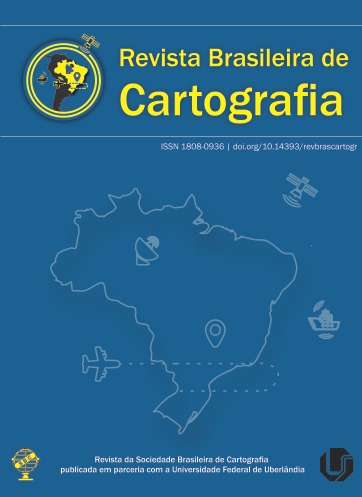Spectral Sensitivity of Vegetation Indices: GNDVI, NDVI and EVI in the Riparian Forest of the Serrinha II Reservoir – PE, Brazil
Main Article Content
Abstract
Riparian forests are forests associated with streams, rivers and lakes that have an influence on the protection of ecosystems from man-made actions. The objective of this study was to identify changes in the Caatinga riparian forest areas, based on the spectral sensitivity of vegetation indices (IVs): GNDVI, NDVI and EVI, considering a temporal space analysis (1985 to 2019) in the surroundings of the Serrinha II Reservoir - PE - Brazil. For this purpose, images from sensors/satellites TM - Landsat 5, OLI - Landsat 8 and MSI - Sentinel 2 were used. The IVs were validated comparing spectral profiles and correlation of the products generated by Landsat 8 and Sentinel 2. Through the binary classification of the indices, changes in vegetation cover were identified between 1996 and 2019, resulting in a loss of 55.40% of vegetation. These events, associated with the effects of the drought were also observed for the reservoir, between 2012 and 2019, with 32.36% reduction in the water mirror. Among the IVs, the GNDVI and NDVI showed greater sensitivity to identify the riparian forest with a Pearson coefficient equal to 0.93 for Landsat 8; 0.94 for Sentinel 2 and an overall accuracy of over 95%. On the other hand, EVI was more sensitive to identify the reservoir area, with overall accuracy of 99.48%. The monitoring of artificial reservoirs and riparian forests of seasonally dry forests such as the Caatinga benefit from the use of IVs where the choice of a given isolated IV should be interpreted with caution according to the characteristics of the region studied.
Downloads
Metrics
Article Details
Authors who publish in this journal agree to the following terms:
- Authors retain copyright and grant the journal right of first publication with the work simultaneously licensed under a Creative Commons Attribution License that allows others to share the work with an acknowledgment of the work's authorship and initial publication in this journal.
- Authors can enter into separate, additional contractual arrangements for the non-exclusive distribution of the journal's published version of the work (e.g., post it to an institutional repository or publish it in a book), with an acknowledgment of its initial publication in this journal.
- Authors are permitted and encouraged to post their work online (e.g., in institutional repositories or on their website) before and during the submission process, as it can lead to productive exchanges, as well as earlier and greater citation of published work (see "The Effect of Open Access").





